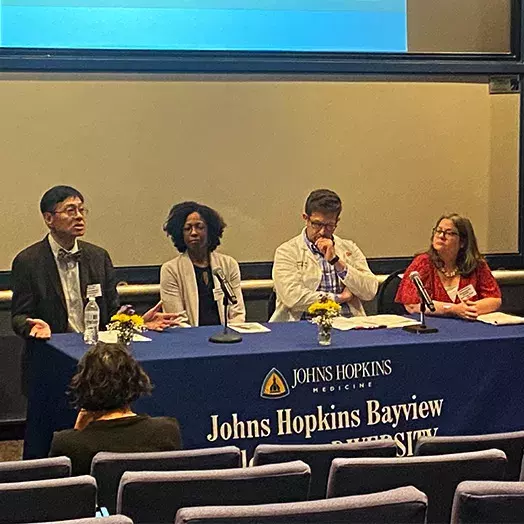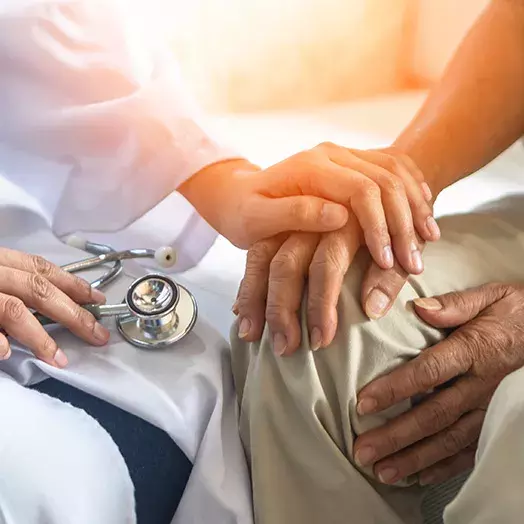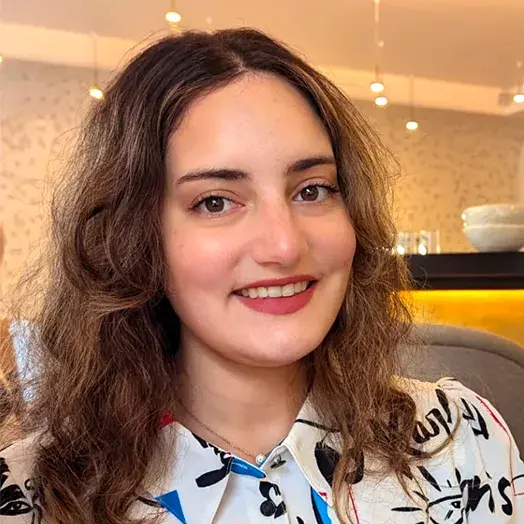
How can health tech developers make AI better for seniors?
What to Read Next

research
Do you trust the American health care system? Can policymakers help you trust it more?While AI is revolutionizing the health care industry, the population most likely to need it is also less likely to benefit from it.
Approximately 1 in 6 Americans are now age 65 and older, compared to 1 in 20 a century ago. And people 85 and older are the fastest-growing population in the country, according to the U.S. Census Bureau. So as part of National Healthy Aging Awareness Month in September, the Johns Hopkins AI & Technology Collaboratory for Aging Research brought together practitioners from across the elder care sector for the seminar “Bridging Silos: Diverse Key Partner Perspectives on Leveraging AI to Improve the Care of Older Adults.”
Understanding seniors’ needs
According to Amanda Lazar, an expert in human and computer interaction at the University of Maryland, negative messages about aging are pervasive throughout society from discrimination in hiring to warnings about wrinkled skin at the dermatology office to morbid jokes on birthday cards at the drug store. And the health care system is not immune to ageism.
Tech designers, Lazar says, have ageism biases, which impact their choices of which devices to develop, and the algorithms and measurements built into digital technologies. As an example, Lazar notes many common pedometers do not accurately report seniors’ movements because the devices are not calibrated for elders’ speed and length of stride.
Lazar explains that designers sometimes view older adults as “digitally inferior” and incapable or reluctant to use new technology. Designers also tend to narrowly focus technology solutions on frailty or cognitive decline rather than other ways to help older adults.
When tech developers do consult older adults, the seniors often reflect their own ageism biases back on the designers, a behavior called the “not for me” phenomenon. Rather than seeing a new technology as a solution for themselves, Lazar says, seniors will often think, “Oh, this would've been really good for my mom when she was my age,” or “My neighbor could really use this.” The trend of older adults refusing to wear medical emergency buttons is a prime example.
“I don't think technology will ever be a cheap fix. It doesn't operate outside the complexity of our lives, and any new innovation introduces new work,” said Lazar. “People have to develop new routines or they can't use it.”
The business of health
Affordability and sustainability also pose challenges for bringing new technologies to senior care.
“As a business professor, I’m always asking the question ‘Who’s going to pay for it,’“ said Phillip Phan, the Alonzo and Virginia Decker Professor of Strategy and Entrepreneurship at Johns Hopkins Carey Business School. Phan also directs the JH AITC's Networking and Engagement Core.
Phan adds that new AI algorithms based on larger language models, the availability of large public data sets, and even synthetic data sets are accelerating the development of new technologies and drugs. “That is very exciting because it shortens the development time and makes it cheaper,” Phan said.
At AITC, Phan frequently coaches innovators on moving their ideas to implementation. He says many of the big tech companies and markets are focused on integrating remote monitoring of patients with telemedicine to expand access to health care. According to Phan, the challenge is identifying the problem or unmet need a new technology will solve and who will benefit from the solution.
“You can sort of imagine the design problem as a balance between creating the maximum value both for the user and the beneficiary, which may be different groups,” Phan said. “You're just trying to balance these various elements, some of which are aligned, some of which are not aligned,” he added.
Phan says AITC is working to move new technologies to a prototype stage where they can be evaluated. Through evaluation, developers can identify the real value for seniors and determine whether a technology is affordable and sustainable.
“The aligned demand would be a patient that has good outcomes, that doesn't come to the hospital when they don't have to, and has a good quality of life. Everybody in the system wants that,” said Phan.


